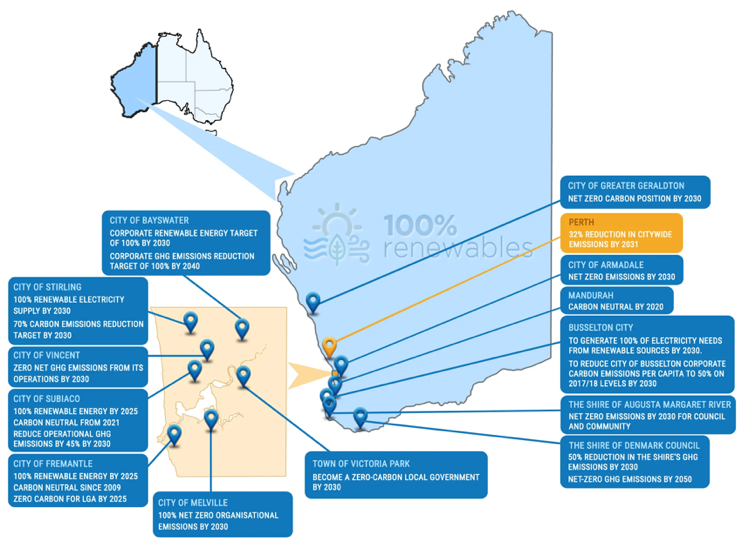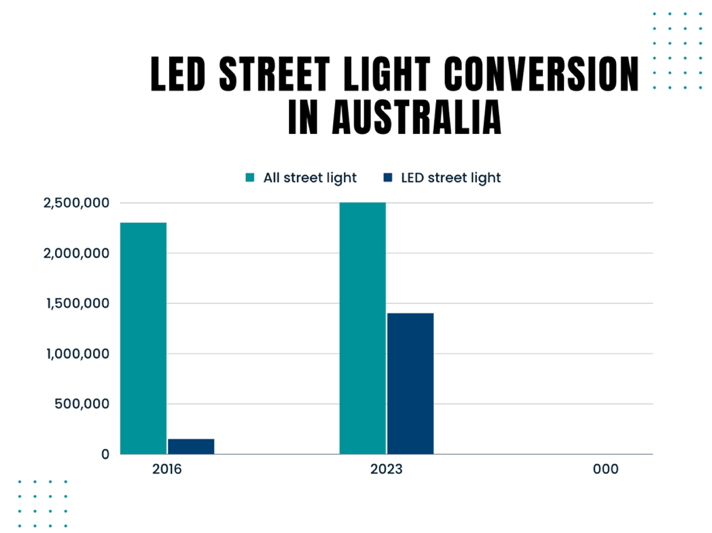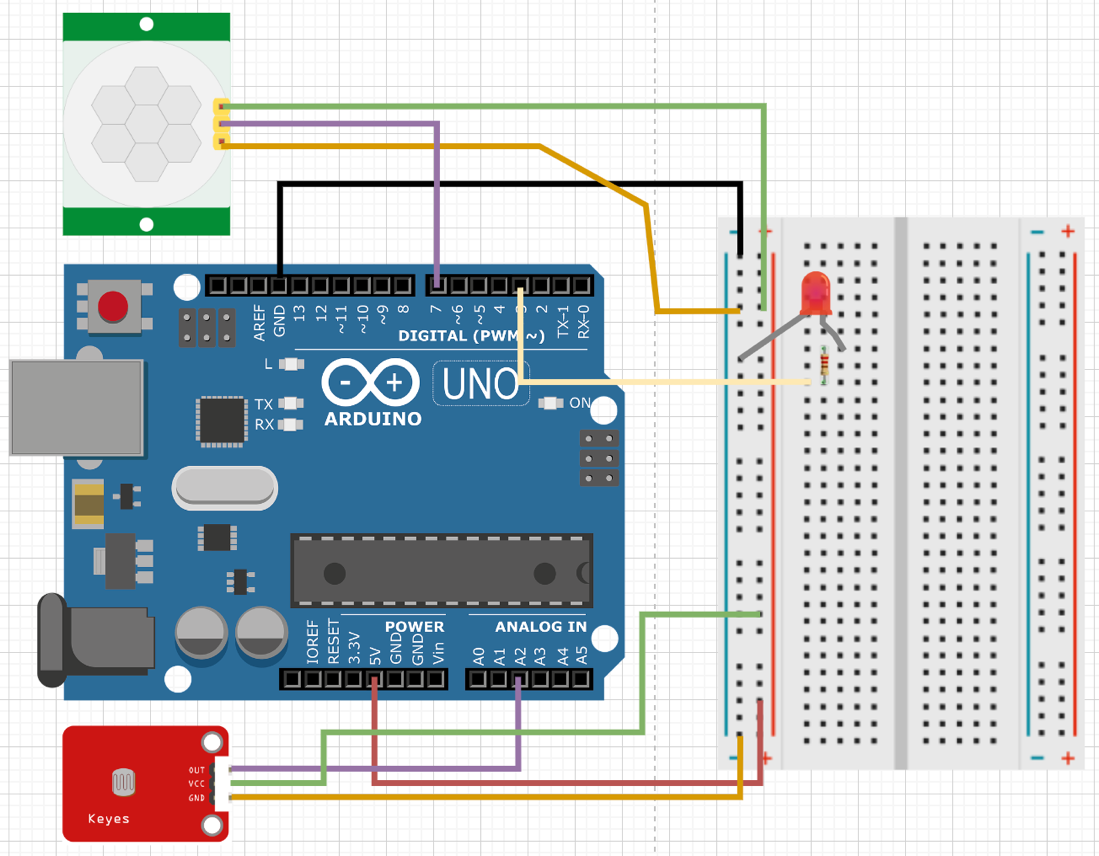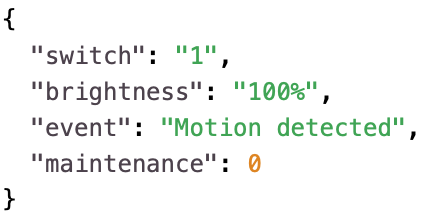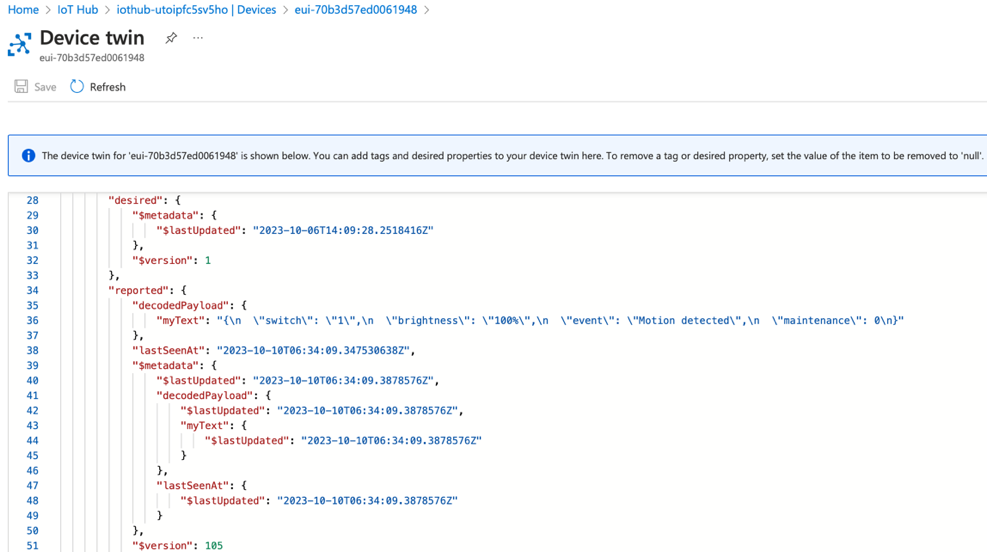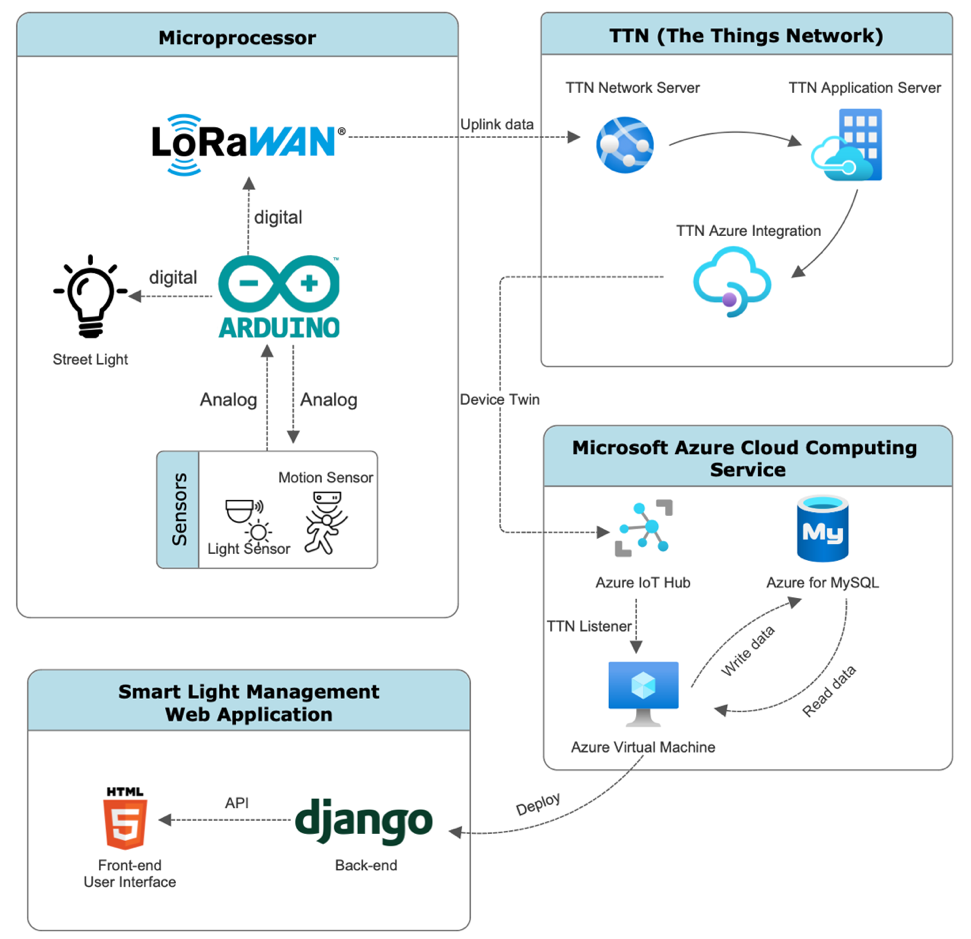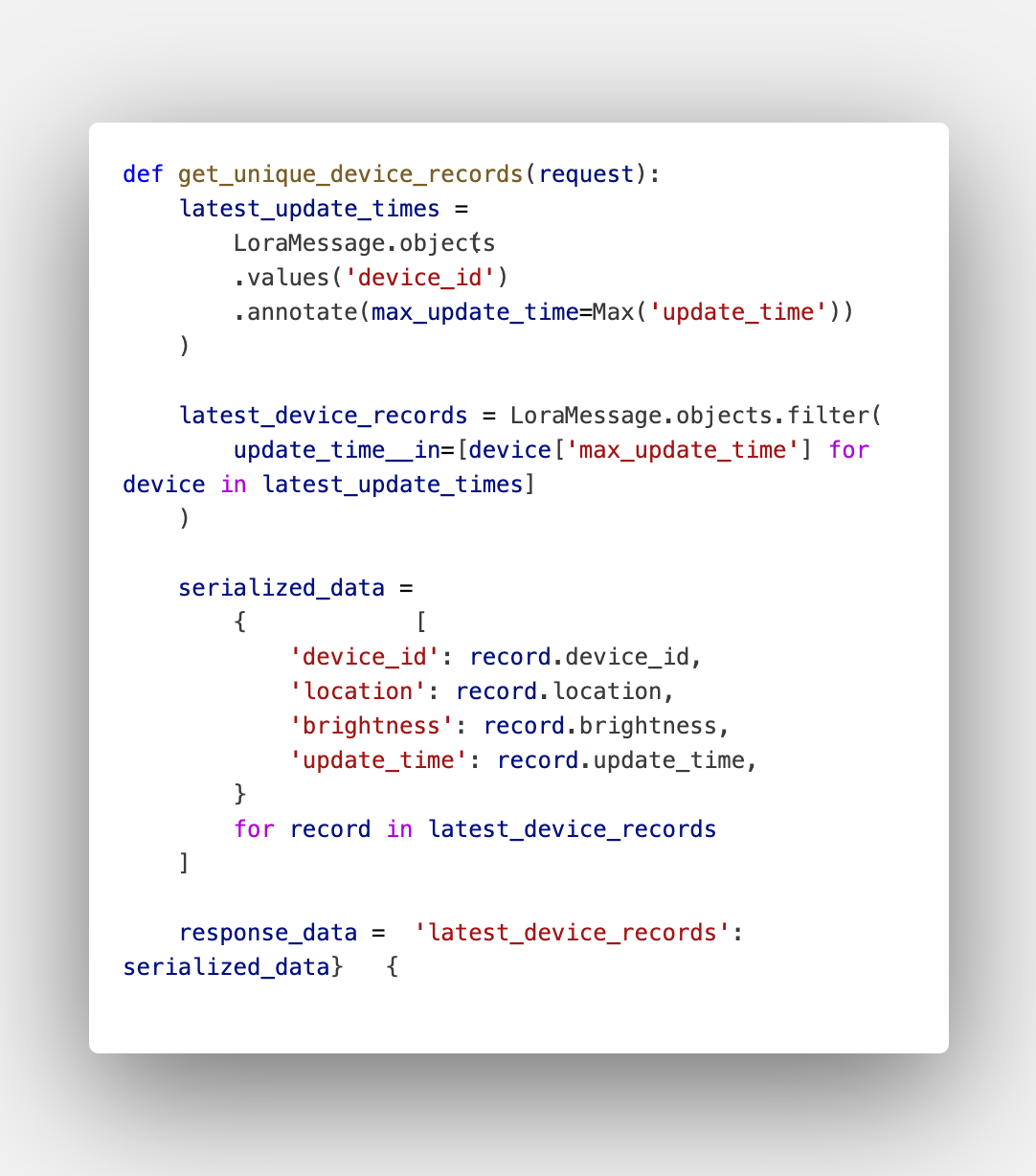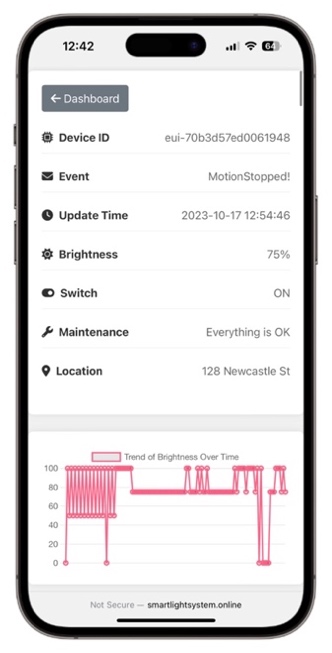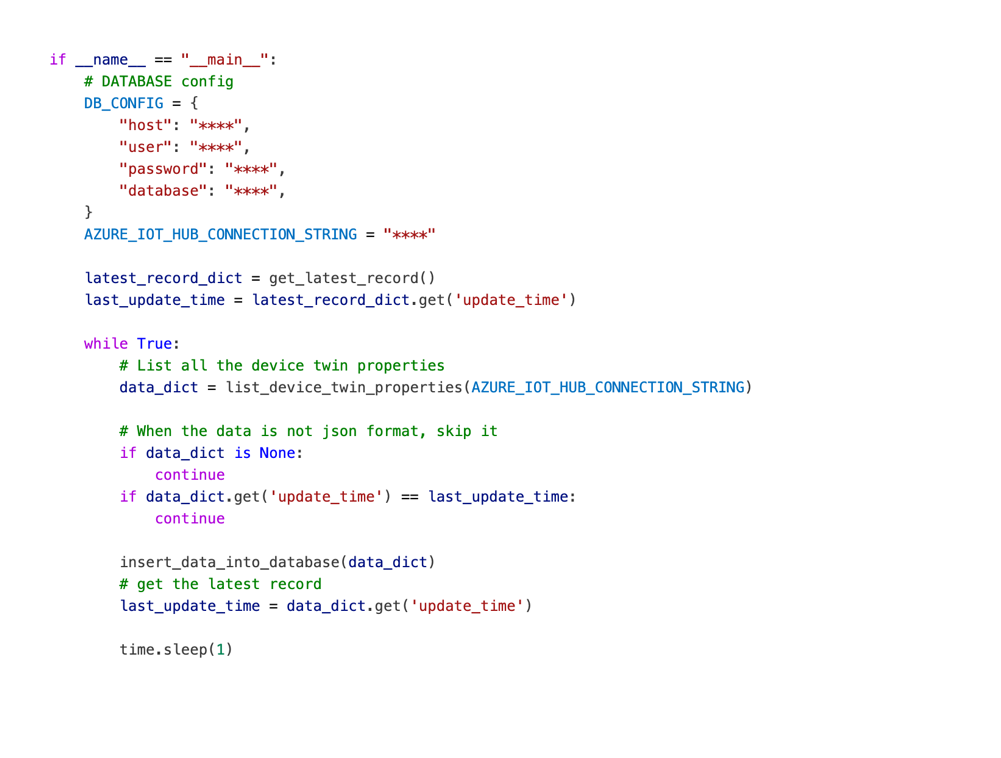- Published on
Smart Street Light Management System
- Authors

- Name
- Jack Qin
Better City Better Light with Smart Street Light Management System
Demo can be accessed via this link:https://smartlight.fudongs.com
ABSTRACT
Addressing global warming is a pressing issue in this era for humanity. In response, we initiated a research project focused on sustainability, which led to the design of a smart LED streetlight system. Implementing this system worldwide could significantly reduce energy consumption and streamline streetlight maintenance management.
Our initiative seeks to optimize streetlight energy usage. Traditional streetlight models, which are typically controlled by time or ambient light, often consume more energy than necessary.
Our project aims to save energy by maintaining a reasonable streetlight brightness level when there's no human activity in the vicinity, and increasing the brightness when activity is detected.
Furthermore, the streetlight system can send alerts to management when a malfunction occurs. This feature makes maintenance more efficient, eliminating the need for manual inspections of each streetlight.
In rural areas, where internet access might be limited, identifying malfunctioning streetlights can be challenging.
While the energy saved by a single light might seem minimal, when this system is implemented globally, the cumulative energy savings will be substantial.
This system not only conserves energy and resources but also advocates for climate change action and sustainable practices.
Introduction and Background
Figure 1 the smart streetlight lighting upgrade by Ausgrid [1]
The suggested model employs a light sensor to regulate the lights' on-off status and a motion sensor to modify brightness based on nearby activity. Using an Arduino micro-controller, the system processes this information efficiently.
Incorporation of Lora WAN technology facilitates data transmission to the TTN (The Things Network).
After the TTN gets the data, it's sent to Azure, where it's saved in a database and presented on a dashboard. This allows central streetlight authorities to base their actions on the data. The dashboard provides maintenance teams with real-time information, optimizing maintenance and presenting a thorough IoT solution from the device to the cloud and then to analytics.
The energy consumption and maintenance cost of streetlight in Australia is considerably expensive. Reducing streetlight expenses will aid the government's objective of achieving net zero emissions. As part of the Paris agreement [1], The Australian Government has passed laws aiming to reduce emissions by 43% by 2030, using 2005 as the baseline, with a goal of reaching net zero emissions by 2050.
Enhancing energy efficiency and performance is crucial for Australia to meet these objectives [2]. For the consumption of the energy in Australia, street lighting represents the primary cause of greenhouse gas emissions by local governments, usually making up 30 to 60% of their total emissions [3].
Australia has roughly 2.28 million streetlights, with about 33% lining main roads and 67% on local roads. The yearly energy expense for public lighting in the country surpasses 250 million [3].
Primary motivation for evaluating smart LED streetlight
Figure 2 Net zero commitments by WA councils [7]
The primary motivation for evaluating a smart LED streetlight was to support the Australian government’s plan to reach net zero by 2030.
LED light has been proved that can save much more energy than traditional streetlight. The conversion of traditional streetlight to LED is essential for cutting down the energy bills.
LED Streetlight Conversion in Australia
In Australia, the conversion of traditional streetlights to LED streetlights began in 2016. The IPWEA's (Institute of Public Works Engineering Australasia) Street Lighting & Smart Controls Program has already converted about 6.5% of Australia's 2.3 million streetlights to LEDs. The city of Perth served as a model for this initiative, installing Smart Light controls in 4 test areas. The Secure LoRa network is used by the light controllers to communicate changes to a central controller, enabling city engineers to adjust light levels to fit specific requirements. Each Smart Light controller reduces electricity consumption by 35%, or around 900g of CO2 per light per year. Additionally, smart lights automatically adjust to shifting sunlight and sunset throughout the year, making them safer, and have a 20% longer lifespan [3].
Energy Savings and Future Projections
By 2023, approximately 1.4 million out of 2.5 million streetlights in Australia were LEDs, covering 57% of the total. Despite the addition of 200,000 lights, energy consumption dropped by 30% since 2016. With 1.1 million lights still needing conversion, factors pushing towards LEDs include a solid business case, energy conservation, reduced GHG emissions, Australia's commitment to the Minamata Convention on Mercury, and the decline in traditional lamp production. Industry data suggests that the remaining non-LED lights will switch over in the next 3-4 years, aiming for a 60% energy saving compared to 2016 [4]. Hence, the potential energy savings from switching to LED streetlights are considerable.
Benefits of Switching to LED Streetlights
Figure 4 potential Co2 emission cut down by switching to LED streetlight [11]
Energy Efficiency and Emission Reduction
- LEDs consume up to 75% less energy and produce 90% fewer CO2 emissions compared to halogens.
- LED lights are more programmable, produce better quality light, protect eyesight, and have fewer safety issues.
- LED streetlights save energy consumption and maintenance costs, making them a solid choice for implementing smart streetlight systems.
Adaptive Flexibility and Energy Conservation
The Smart LED Streetlight system adjusts its brightness based on motion detection and weather conditions, significantly reducing energy consumption.
Equation for Energy Saving:
Energy Saved = [Time (Traditional LED On) - Time (Smart LED On when no motion detected)] x Power Consumption
Safety and Proactive Monitoring
This system maintains consistent brightness, offers visibility and security, and promptly sends notifications in case of anomalies or malfunctions.
Data-Driven Insights and Future Integration
The Smart LED Streetlight system is a strategic tool for urban planning and can significantly influence other urban development initiatives.
Project Aims and Considerations
The project aims to consider the benefits of implementing smart LED streetlight systems.
System Overview: This system offers a holistic solution for lighting problems by combining sensing technology, connectivity, and data analytics. It considers both immediate requirements and long-term objectives, addressing constraints and opportunities related to real-world application and commercial viability.
- SOLUTIONS AND IMPLEMENTATION
2.1. Hardware Solution
Factors Considered:
- i. Cost: A budget of $50 for each group was set by the unit coordinator. Components were chosen based on cost-effectiveness and alignment with current market offerings.
- ii. Availability: All prototype hardware was already available in the university inventory, minimizing waiting time for delivery.
- iii. Compatibility: Ensuring seamless integration and smooth communication between components, such as the Arduino Uno, LoRa Shield, and sensors.
- iv. Environmental Impact: Prioritizing energy efficiency, with a strategic choice of LED light bulb for the prototype to reduce power consumption and carbon footprint.
Considerations like availability, redundancy, and contingency were weighed against cost.
LED technology was chosen for its ability to produce high-quality light with significantly less power consumption compared to traditional options, contributing to reduced energy bills and carbon footprint.
| FEATURE | LED | High-Pressure Sodium (HPS) | Metal Halide (MH) | Compact Fluorescent (CFL) |
| Initial Cost | Moderate | Low | Moderate | Moderate |
| ENERGY EFFICIENCY | High | Moderate | Moderate to High | High |
| LIFESPAN | 50,000-100,000 hrs | 20,000-24,000 hrs | 6,000-15,000 hrs | 8,000-20,000 hrs |
| LIGHT QUALITY (cri) | 70-95 | 20-30 | 60-90 | 80-90 |
| DIMMABILITY | Y | N | Sometimes | Sometimes |
| MAINTENANCE COST | Low | Moderate | Moderate to High | Moderate |
| ENVIRONMENTAL IMPACT | Low (No mercury) | Moderate (Some types have a small amount of mercury) | Moderate (Contains mercury) | Moderate (Contains mercury) |
LED Light Features Comparison
v. Range and Communication
The LoRa Shield provides long-range communication capabilities, suitable for wide area coverage without the need for numerous gateways and repeaters, allowing remote control and monitoring.
vi. Sensitivity and Accuracy
The LDR sensor's sensitivity and accuracy in detecting changes in ambient light levels are crucial for determining when to turn the streetlight on or off based on requirements.
vii. Reliability and Durability
Components need to withstand outdoor conditions, including temperature variations and moisture, to ensure consistent operation of the streetlight system.
viii. Open Source and Community Support
The Arduino platform was chosen for its open-source nature and strong community support, making it easier to find resources and assistance when needed.
The primary electronic elements of the project are listed based on these criteria in Table 2.
| Component | Cost($AUD) | Availability | Accuracy | Compatibility | Library | Energy efficiency | ||
| Arduino Uno | $25-40 | YES | 10-bit ADC | YES | YES | N/A | ||
| LDR sensor | $1-5 | YES | Calibration required | YES | N/A | N/A | ||
| PIR Motion Sensor | $5-15 | YES | 100 degree 5-7 meters; 8 seconds delay (calibrated) | YES | N/A | N/A | ||
| Dragino LoRa Shield | $20-50 | YES | N/A | YES | YES | Moderate | ||
| LED light bulb | $3-15 | YES | N/A | YES | N/A | High |
Key Components for the Prototype
2.2 Hardware Design
i. Arduino Uno
The Arduino Uno serves as the central controller of the system, offering versatility, community support, open-source nature, ease of programming, cost-effectiveness, and compatibility with components. It features various digital and analog pins, making it ideal for interfacing with different sensors and controlling LED lighting. The programming is developed using Arduino IDE, allowing for a flexible and responsive control system.
ii. LDR Sensor
The Light Dependent Resistor (LDR) sensor, also known as a photoresistor, changes its resistance in response to light levels. It is used to detect ambient light conditions, enabling energy-efficient and automated operation of streetlights. Its simplicity, cost-effectiveness, and reliability make it a suitable choice for achieving responsive and efficient street lighting.
iii. HC-SR501 Motion Sensor
The HC-SR501 is a Passive Infrared (PIR) motion sensor used to detect motion, enhance energy efficiency, improve security, provide real-time responsiveness, and offer a cost-effective solution for achieving smart and responsive street lighting. It can detect motion at a distance ranging from approximately 3 meters to 7 meters.
Its sensitivity can be adjusted using a potentiometer on the sensor module to set the maximum detection range. A repeatable trigger mode was developed to increase brightness of light for 8 seconds after motion is detected.
iv. Dragino LoRa Shield
The Dragino LoRa Shield features LoRa technology, enabling long-range, low-power, reliable, and cost-effective communication. It was used to enable long-range communication between the streetlight nodes and The Things Network.
v. LED Light Bulb
LED light bulbs were chosen for the project due to their exceptional energy efficiency, long lifespan, instant lighting, directional illumination, dimming capabilities, and positive environmental impact. These characteristics make LEDs a practical and cost-effective choice for smart streetlight applications.
Wiring Diagram
Figure 5: The diagram illustrates the hardware's wiring. The sensors share the 5V output power pin on the Arduino board. The motion sensor is connected to digital pin 7 for true or false results. The LDR sensor, requiring an analogue value for light level, is connected to analogue pin A2. The LED light bulb is linked to digital pin 3.
2.2.1 System Design
2.3 System Architecture
In the design of the communication flow, smart streetlight devices utilize LoRa as the communication protocol—a long-range, low-power wireless technology ideally suited for IoT devices that minimizes system consumption while saving energy.
Warning: Ensure proper spacing and capitalization in "LoRa" and "LoRaWAN" to maintain consistency.
When the status of street light changes, Arduino will send data to The Things Network (TTN) through LoRaWAN, an open, global IoT data network. From TTN, data is further integrated and forwarded to the Azure IoT Hub, a centralized hub responsible for receiving, processing, and distributing data from various IoT devices. It offers a rich set of APIs and tools, enabling easy analysis and manipulation of the data. The message sent by Arduino can be seen by Azure IoT Hub Device Twin Properties. JSON will be used as the data format for the entire data pipeline.
Figure 6: Flow chart of Smart Street Light system
The smart street light system is structured to optimize energy efficiency and improve the lighting management. As illustrated in Figure 5, a LDR sensor is used for measuring ambient light level.
Tip: Use a LDR sensor to measure ambient light level for efficient lighting management.
During daytime, the system turns the light off when the ambient light level is above the threshold.
At night, the light is turned on at 80% brightness, known as the energy-saving mode, to maintain visibility for road safety.
When motion is detected, the light switches to 100% brightness and gradually returns to energy-saving mode when motion stops, using a repeatable trigger mode with an 8-second time delay to conserve energy.
The system checks the light bulb's functionality using a light sensor and sends an error message if maintenance is needed.
Example of a Message
Azure IoT Hub does not offer a data update API, so a listener must be created to ensure current data from the Arduino is maintained. (Refer to section "Encountered Issue" for more details.)
All real-time data is securely stored in the Azure Database for MySQL, a high-performance, scalable relational database service.
Azure IoT Hub Device Twin Properties
When building the communication flow, the Smart Street Lights Management interface delivers a user-friendly solution. It seamlessly translates obscure technical data from streetlights into a beautifully crafted, interactive, and clear user interface. This ensures that users can grasp the entirety of the streetlight network without diving deep into complex details.
System Architecture and Communication Flow
Database Implementation
- Azure Database for MySQL: Implemented for storing real-time data.
- Scalability: Ensures handling increased load without performance issues.
During the database design, we implemented Azure Database for MySQL. This cloud-based relational database service is used to store all real-time data. Its scalability ensures that as the number of streetlights and data points grows, the database can handle the increased load without performance issues.
A table is designed to store device-specific data, including events, brightness levels, operational status, location, and more. The table schema's structure can be represented as follows:
| Field | Type | description |
| device_id | varchar | Unique device identifier |
| brightness | varchar | Brightness information |
| update_time | datatime | Timestamps when data is updated |
| event | varchar | The reason why brightness/switch changed |
| maintenance | boolean | maintenance status,1:Functional 0:Error |
| switch | boolean | switch status1:ON 0:OFF |
| location | varchar | device's physical location |
Table 3: Table scheme
2.3.2 Backend Implementation
The backend is developed using Django, a popular open-source web application framework in Python. Django follows the MVT (Model-View-Template) architecture.
Models handle data, views handle application logic and requests, and templates are used for rendering HTML pages.
Django's ORM (Object-Relational Mapping) capabilities simplify the process of querying the Azure Database for MySQL, ensuring efficient data retrieval.
Code snippet from backend API
The REST API endpoints serve data to the frontend, fetching it from the Azure Database, processing it if necessary, and sending it in a structured JSON format.
Backend handles tasks like aggregating data for specific time periods, calculating energy consumption metrics, and generating scatter plots based on historical data.
Code available on GitHub
https://github.com/qinscode/SmartStreetLightManagement
| API | function |
| / or /dashboard | Dashboard page |
| /device/:device_id | Device detail page |
| /get_latest_record/:device_id | API for latest record data |
| /get_history_records/:device_id | API for history records |
| /get_unique_device_records | API for unique devices |
Table 4: Restful API and function
2.3.3 Frontend Implementation
The frontend of the Smart Street Lights Dashboard is designed with a responsive layout primarily using the Bootstrap framework. This ensures that the device information is displayed clearly and neatly across various devices and screen sizes (See Figure 12).
To enhance the experience of the user interface, the Font Awesome icon library is incorporated. With JavaScript, the page dynamically fetches the latest device records from the backend and displays them on the frontend.
Device details are rendered dynamically using Django's template tags to display different content based on the device's status. As mentioned in 2.2.1 Database Implementation, the type of Switch and Maintenance are boolean. At this stage, they will be converted into different content according to the value.
In the middle of the details page, historical data is used to dynamically generate a brightness trend chart and populate a historical records table.
Code Snippet
We have registered a domain name for the Smart Street Lights Management system, which can be accessed via the following link: http://www.smartlightsystem.online
Dashboard and Device Details UI in Mobile Device
2.3.4 Encountered Issue
Challenges Encountered with TTN's API:
- We faced complexity in understanding TTN's authorization model.
- Distinctions between free and paid users added to the complexity.
Issues with AWS CloudStack:
- Deployment templates provided by TTN were unusable on AWS CloudStack.
Challenges with Azure IoT Integration:
- We couldn't find an interface for updating IoT device information on Azure.
Developed TTN Listener Program:
We developed a TTN Listener program based on Azure's Python SDK to actively listen for updates in device status and store them in the Azure Database for MySQL.
Code Snippet of TTN Listener
- Results and Discussion
- Calibration and Initial Testing
During the calibration and initial testing phase, the goal was to ensure that the system functions effectively.
Calibration of LDR Sensors
Tests were conducted to observe the interaction of LDR sensors with the LED light bulb in different lighting conditions. The bulb was confirmed to turn on in low light and off in bright light. Minor adjustments were made to achieve consistent outcomes. Additionally, the sensors were tested in complete darkness and in increased light levels in a dark room.
Calibration of Motion Sensor
A specific delay of 8-10 seconds was established for the motion sensor. Its sensitivity levels were adjusted for accurate movement detection, and it was confirmed to be securely mounted. The sensor's range of approximately 3 to 7 meters was calibrated using the potentiometer.
Testing of Lora WAN System
The Lora WAN system, facilitating long-distance communication between devices, was tested for stability, accuracy, and speed of data transfer. Integration of Arduino Uno, Lora Shield, and TTN was successfully achieved, and live data are displayed in a figure below.
TTN Live Data Demo
The dashboard, acting as the system's control panel, was evaluated. It is user-friendly, functional, displays real-time information accurately, and all features respond quickly and perform as expected.
The calibration and testing phase played a crucial role in setting up a reliable and user-friendly system. See details in Figure 12.
Recommendations and Future Work
- Differentiating Motion Sources:
The current system cannot differentiate between human and animal motions, leading to unnecessary energy consumption in rural areas of Australia.
Tip: Implement advanced motion sensors or integrate AI-driven cameras to distinguish between human and animal movements, conserving energy more effectively.
- LED Standards and Regulations:
Incorporate a dynamic control mechanism to adjust to local lighting standards and regulations, making the system more versatile and compliant.
- Maintenance Alerts:
Use a more detailed diagnostic system to provide specific error codes or descriptions for quicker and more efficient maintenance.
- Hardware Enhancements:
Consider integrating better sensors and communication modules like Zigbee to enhance the system's reliability and range.
Improvement: Consider integrating better sensors and communication modules like Zigbee, which offers low-power, mesh networking capabilities, enhancing the system's reliability and range.
- Cybersecurity:
Implement robust cybersecurity measures to safeguard the system against potential threats.
- Solar Power Integration:
Integrate solar panels with the streetlights to make them self-sufficient, especially in sun-rich regions of Australia.
- Camera Integration:
Integrate cameras for enhancing motion detection accuracy and providing surveillance for security purposes, especially beneficial in urban areas for safety and monitoring.
- Conclusions
This study delves into a smart lighting system aimed at enhancing energy efficiency by using natural light and data from motion sensors. The system is operated using an Arduino UNO microcontroller, allowing for remote management. It adjusts based on changes in natural light and movement, managed by linked sensors. This system connects with The Things Network, using the Lora WAN protocol, to send sensor data to online platforms.
IoT System for City Energy Management
After collecting the data, an advanced Internet of Things (IoT) system organizes and presents the information over time. This could offer users a view of activity trends in various city regions during the day. The system shows potential in helping cities use less power, emphasizing the importance of energy savings. The prototype is considered as a completed student project for educational purpose and have room for future improvement if can be commercialised.
References
- Ausgrid, "Smart Street lighting upgrade," [Online]. Available: https://www.ausgrid.com.au/About-Us/News/smart-street-lighting-upgrade
- [2] Department of Climate Change, Energy Efficiency and Water, "Net zero," [Online]. Available: https://www.dcceew.gov.au/climate-change/emissions-reduction/net-zero
- [3] Australian Government - Department of Industry, Science, Energy and Resources, "Government priorities - Australia's energy strategies and frameworks," [Online]. Available: https://www.energy.gov.au/government-priorities/australias-energy-strategies-and-frameworks
- [4] Australian Government - Department of Industry, Science, Energy and Resources, "Draft streetlight strategy," Dec. 2022. [Online]. Available: https://www.energyrating.gov.au/sites/default/files/2022-12/draft-streetlight-strategy.pdf
- [5] IPWEA, "A stocktake of Australia's progress towards smart street lighting," [Online]. Available: https://insite.ipwea.org/a-stocktake-of-australias-progress-towards-smart-street-lighting
- [6] Australian Government - Department of Industry, Science, Energy and Resources, "Business equipment guides - Lighting," [Online]. Available: https://www.energy.gov.au/business/equipment-guides/lighting
- [7] IPWEA, "Submission for AEMC on Minor Energy Flow Metering," Feb. 16, 2023. [Online]. Available: https://www.aemc.gov.au/sites/default/files/2023-03/IPWEA%20Submission%20for%20AEMC%20on%20Minor%20Energy%20Flow%20Metering%2016%20Feb%202023.pdf
- [8] Berg Insight, "The installed base of smart streetlights approaches 20 million units worldwide," [Online]. Available: https://www.berginsight.com/the-installed-base-of-smart-street-lights-approaches-20-million-units-worldwide
- [9] "LEDs could slash street light energy usage by 97%," Renew Economy. [Online]. Available: https://reneweconomy.com.au/leds-could-slash-street-light-energy-usage-by-97-16446
- [10] "Net Zero Leader board: States, local governments, communities – Dec 2021," 100% Renewables. [Online]. Available: https://100percentrenewables.com.au/net-zero-leaderboard-states-local-governments-communities-dec-2021
- [11] P. T. Daely, H. T. Reda, G. B. Satrya, J. W. Kim and S. Y. Shin, "Design of Smart LED Streetlight System for Smart City with Web-Based Management System," in IEEE Sensors Journal, vol. 17, no. 18, pp. 6100-6110, 15 Sept. 2017, doi: 10.1109/JSEN.2017.2734101.
- [12] "LED streetlights and underground power," Western Power. [Online]. Available: https://www.westernpower.com.au/community/news-opinion/led-streetlights-and-underground-power
- [13] "Smart Cities", City of Perth. [Online]. Available: https://perth.wa.gov.au/en/live-and-work/smart-cities
Appendices
- A GUIDE FOR REPRODUCING THE PROTOTYPE
The source code can be found on:
https://github.com/realfudong/CITS5506_SmartLightManagement
To set up the Smart Street Light System:
Connect the Arduino Uno to a computer.
Open Arduino IDE, open a file with the code inside smart_streetlight.ino.
Select Arduino Uno board in Arduino IDE and set the baud rate to 9600.
Connect the sensors and other components to the Arduino board, as illustrated in the wiring diagram (Figure 5).
Verify and upload the code in Arduino IDE.
Sign in to the TTN website and configure the devices, change Network Session Key, App Session Key and Device Address of Arduino script according to your own TTN account.
Running Management system: Install required packages (Python 3.9, Django 4.2.6), and set up database connection by “config.json”. After that, go to the project directory and run the command: python manage.py runserver. If the server runs successfully, the website should be accessible via http://127.0.0.1:8000

